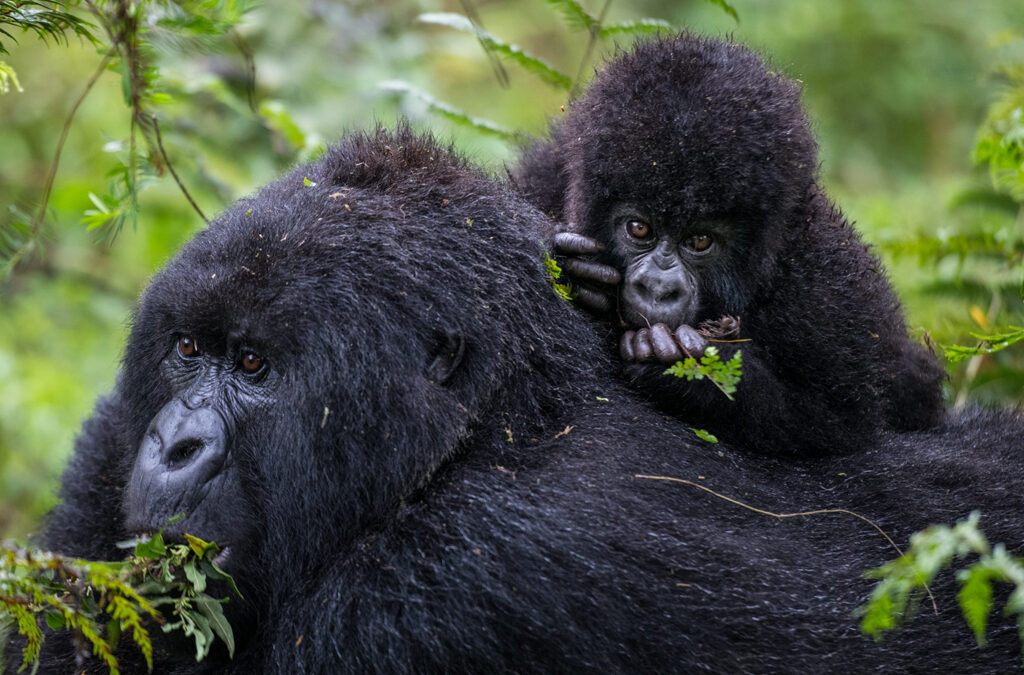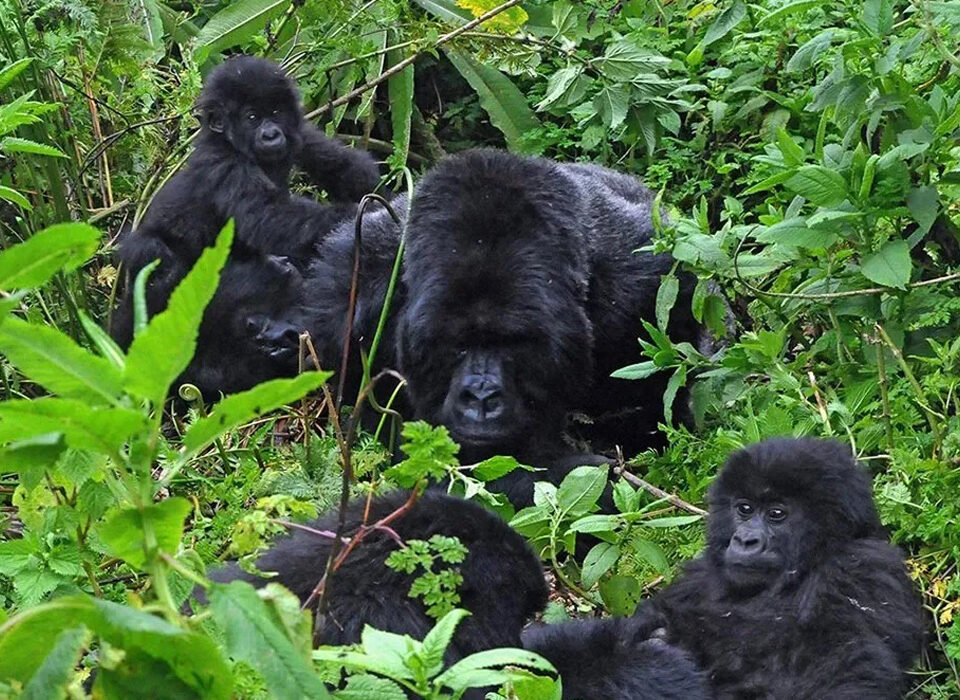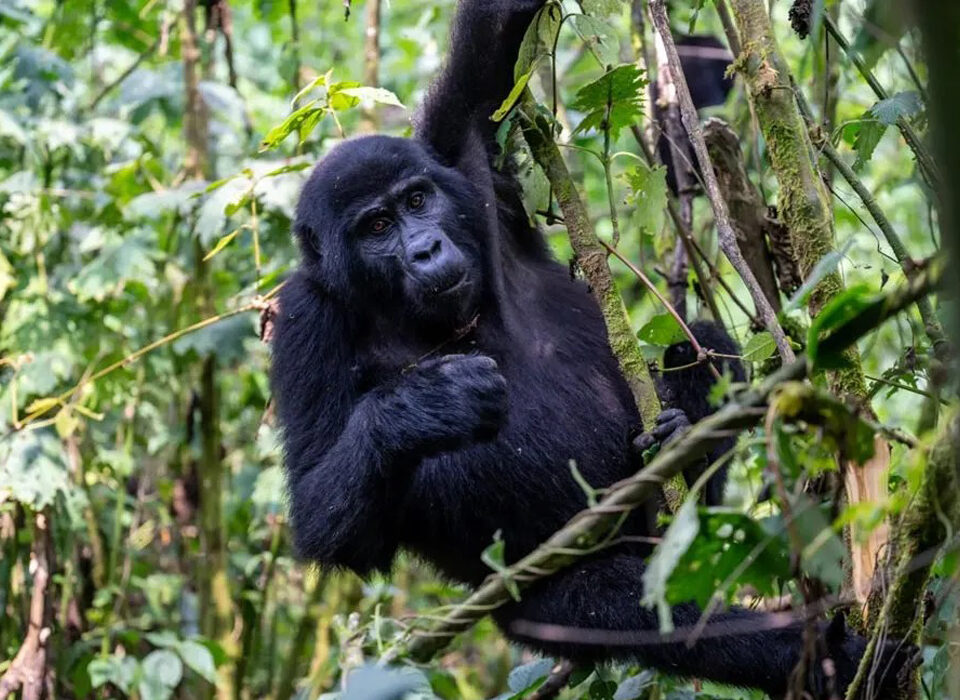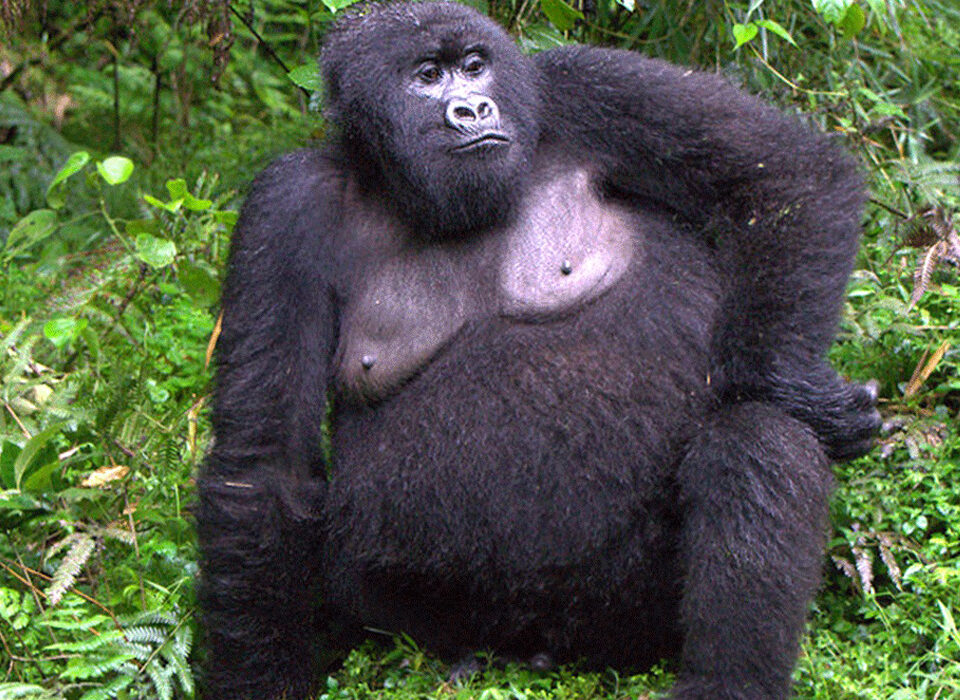- GET IN TOUCH WITH US:
- +256 753518160
- +256 777842166
- info@experiyatourcompany.com

Explained Gorilla Trekking Tour Packages
October 3, 2025
Why Visiting Uganda is a Unique Safari
October 3, 2025Most Popular Gorilla Family Groups in Rwanda

Overview of Rwanda’s Gorilla Families
Rwanda is home to one of the largest populations of mountain gorillas in the world. Presently, there are about ten habituated gorilla families in Volcanoes National Park. These include Sabyinyo, Susa, Karisimbi, Umubano, Amahoro, Kwitonda, Hirwa, Bwenge, Agashya, and Ugenda. All these families are accessible to visitors through guided treks.
Volcanoes National Park hosts around 380 mountain gorillas. The park itself is part of the greater Virunga Mountain Range, which extends into the Democratic Republic of Congo. Approximately 500 gorillas inhabit the Virunga range, while the remaining population lives in Uganda’s Bwindi Impenetrable National Park and Mgahinga Gorilla National Park.
Unique Adaptations of Mountain Gorillas
As their name suggests, mountain gorillas thrive in high-altitude forests, usually between 8,000 and 13,000 feet. Their thick fur protects them from the freezing temperatures common at these elevations. With powerful arms, broad chests, and strong hands and feet, they are well-suited to their rugged environment.
Male gorillas grow significantly larger than females. A mature male can weigh between 140–206 kg and reach a height of 1.7 meters. With age, males develop a distinct patch of silvery-white hair on their backs, earning them the title “silverback.”
Susa A Family Group
The Susa A family is among the most famous yet most challenging gorilla families to track in Volcanoes National Park. The group’s name comes from the Susa River, which flows through their home range.
Susa A gained global attention through Dian Fossey, the renowned primatologist, who often carried out research on this family. Today, tracking Susa A can be demanding, as the group tends to wander far. However, experienced trackers locate them in advance, ensuring trekkers reach the family without wasting time in the dense jungle.
Highlights of Susa A
- This group is celebrated for its playful pair of twins, Byishimo and Impano, who bring endless energy and excitement to the family.
- The group also includes Poppy, one of the oldest habituated gorillas still living in the wild.
- Susa A consists of over 24 members, including three silverbacks. The leading silverback is known as Kurira.
Susa A once had 42 members, but the family split in 2009, reducing its size to the current number. Treks to this group are recommended for physically fit travelers who are prepared for long hikes. The reward is an unforgettable experience—watching twins play, silverbacks guard, and juveniles feed in their natural habitat.
Susa B (Karisimbi Group)
In 2009, part of the Susa A family split away, forming the Susa B family, also known as the Karisimbi group. This group lives on the slopes of Mount Karisimbi, Rwanda’s highest peak at 4,507 meters above sea level.
Led by the silverback Nyagakangaga, the group moved to higher elevations, often requiring trekkers to spend a full day reaching them. The high altitude, steep slopes, and thick vegetation make this trek one of the most demanding in Volcanoes National Park.
On April 10th, 2012, the Karisimbi group experienced another split, giving rise to the Isimbi family. By October 2016, the Karisimbi family numbered around 10 members, including five silverbacks. However, since then, they have not been sighted regularly, as they are believed to have crossed into the Democratic Republic of Congo.
Interesting Facts About Mountain Gorillas
Gorillas Are Constant Feeders
Mountain gorillas spend nearly a quarter of their day eating. About 85% of their diet consists of leaves, shoots, and stems. However, they also feed on insects, snails, roots, bark, and decaying wood.
Long Life Span
In the wild, gorillas can live for more than 40 years. Young gorillas are considered infants until about three and a half years of age. Between 8–12 years, males are known as “blackbacks.” Once they reach maturity at around 12 years, they develop the characteristic silver hair and become “silverbacks.”
Conservation Status
Mountain gorillas remain an endangered species. Their greatest threat is the destruction of their natural habitat. Expanding human populations often convert forests into farmland, causing deforestation and reducing the gorillas’ range. Additionally, snares set for bushmeat can accidentally injure gorillas.
Conflicts sometimes occur when gorillas raid crops such as maize and bananas, creating tension with nearby communities. Despite these challenges, ongoing conservation efforts continue to protect these gentle giants.



